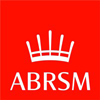From the Publisher
Here is a collection which spans four centuries and more than five countries - some vibrant threads from the rich tapestry of early music. We don't necessarily think of the violin as an early music instrument but in fact it evolved soon after 1500, during the early years of the musical renaissance, in a form more or less as we know it today. Most of the music in this anthology has some connection with stringed instruments, either the violin itself or one of its forerunners such as the rebec, medieval fiddle or viol. Significantly, all the pieces seem totally at home on the violin / and of course the player's own vitality and enthusiasm are far more important than historical accuracy. The arrangements in this collection can be performed as solos, duets, trios or by larger ensembles. Violin accompaniments for the more advanced player are given. The piano accompaniments can be played on a variety of keyboard instruments. Harpsichord or organ / or similar sounds on an electronic keyboard / work well, particularly in the renaissance pieces. All the earlier, medieval pieces have come down to us as a single melodic line, so the accompaniments have been freely arranged, usually based on ostinati. But the tunes can work just as well with the players adding their own drones and/or percussion. With the later tunes, we know that renaissance musicians loved to improvise variations or 'divisions' on well known tunes. Some are suggested here, but performers are always encouraged to create their own! The full range of traditional fiddle repertoire is now at your fingertips! Using these generous collections, you can create your own ceilidh, barn dance, jazz club, Sarajevo street-café or Gypsy gathering. Some of this music is familiar, some more exotic, but all of it is absolutely authentic, faithfully arranged and, above all, hugely enjoyable. Each title in the series is available in two formats: the violin edition (with an optional easy violin part and guitar chord); or the complete edition, which also includes both keyboard and violin accompaniments. Either format is hugely flexible, which means the music can be played as solos, duets or trios as well as with larger ensembles. Edward Huws Jones has travelled extensively researching fiddle-playing traditions. In each book he explains the background of the particular musical style, giving his own suggestions for a lively performance. And to help recreate the spirit of the music, every book in the series is beautifully illustrated.
Our Description
Here is a collection which spans four centuries and more than five countries - some vibrant threads from the rich tapestry of early music.
We don't necessarily think of the violin as an early music instrument but in fact it evolved soon after 1500, during the early years of the musical renaissance, in a form more or less as we know it today. Most of the music in this anthology has some connection with stringed instruments, either the violin itself or one of its forerunners such as the rebec, medieval fiddle or viol. Significantly, all the pieces seem totally at home on the violin / and of course the player's own vitality and enthusiasm are far more important than historical accuracy.
The arrangements in this collection can be performed as solos, duets, trios or by larger ensembles. Violin accompaniments for the more advanced player are given. The piano accompaniments can be played on a variety of keyboard instruments. Harpsichord or organ / or similar sounds on an electronic keyboard / work well, particularly in the renaissance pieces. All the earlier, medieval pieces have come down to us as a single melodic line, so the accompaniments have been freely arranged, usually based on ostinati. But the tunes can work just as well with the players adding their own drones and/or percussion. With the later tunes, we know that renaissance musicians loved to improvise variations or 'divisions' on well known tunes. Some are suggested here, but performers are always encouraged to create their own!
The full range of traditional fiddle repertoire is now at your fingertips! Using these generous collections, you can create your own ceilidh, barn dance, jazz club, Sarajevo street-café or Gypsy gathering. Some of this music is familiar, some more exotic, but all of it is absolutely authentic, faithfully arranged and, above all, hugely enjoyable.
Each title in the series is available in two formats: the violin edition (with an optional easy violin part and guitar chord); or the complete edition, which also includes both keyboard and violin accompaniments. Either format is hugely flexible, which means the music can be played as solos, duets or trios as well as with larger ensembles.
Edward Huws Jones has travelled extensively researching fiddle-playing traditions. In each book he explains the background of the particular musical style, giving his own suggestions for a lively performance. And to help recreate the spirit of the music, every book in the series is beautifully illustrated.
Item Details
Category: Violin Albums & CollectionsPublisher: Boosey & Hawkes
Publisher's reference: BH 1000966
Part of the The Fiddler Collection series
Our Stock Code: 1188059
Media Type: Paperback (104 pages [score])
 ABRSM Violin (from 2024)
ABRSM Violin (from 2024)


